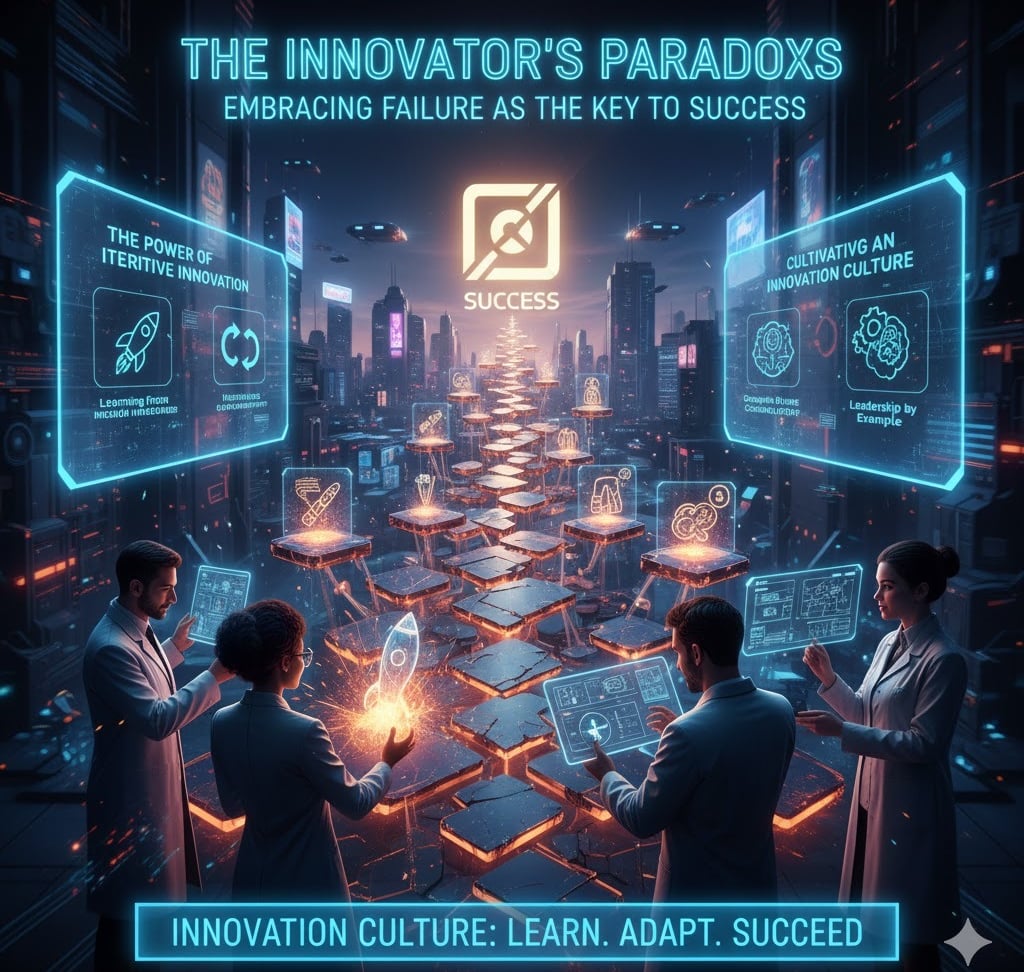The Innovator's Paradox: Embracing Failure as the Key to Success
Mr. Diyan Ahmed
10/14/20252 min read


SEO Idea: A blog post that reframes failure as a vital component of the innovation process. It will use real-world examples to show how setbacks lead to breakthroughs and provide actionable strategies for fostering a culture that encourages experimentation and learning from mistakes.
SEO Keywords: overcoming failure, iterative innovation, rapid prototyping, agile development, learning from mistakes, innovation culture, failure as a stepping stone, experimentation, resilience.
We live in a world that celebrates success and often shies away from talking about failure. But for innovators, this mindset is a paradox. The truth is, breakthroughs rarely happen in a straight line. They are the result of an unpredictable process filled with wrong turns, false starts, and outright failures. True innovators understand that failure is not the opposite of success; it is an essential part of the journey. By embracing failure as a tool for learning from mistakes, they unlock the secret to continuous progress and profound discovery.
The Power of Iterative Innovation and Rapid Prototyping 🚀
The most successful companies and projects don't try to get it right the first time. Instead, they operate on a principle of iterative innovation. This process involves building, testing, and refining an idea in a continuous loop. Each "failure" is simply a data point that informs the next version.
Rapid Prototyping: This approach encourages you to build a rough, low-fidelity version of your idea as quickly as possible. It might not look great, and it certainly won't be perfect, but it allows you to get crucial feedback and discover flaws early on, when they are cheapest to fix.
Agile Development: In the world of software, agile development methodologies are built on the premise of short cycles of work and constant feedback. Teams are encouraged to fail fast and learn faster. This approach means you can pivot quickly when something isn't working, avoiding a significant investment in a flawed product.
Cultivating an Innovation Culture that Embraces Failure
For a team to feel safe enough to experiment and risk failure, you must build an innovation culture that supports it. This isn't just about saying "it's okay to fail"; it's about creating a system that rewards the lessons learned from failure, not just the successes.
Decouple Failure from Blame: When something goes wrong, the focus should not be on who is to blame, but on what can be learned. Conduct "post-mortems" or "retrospectives" where the team can openly discuss what happened, why it happened, and how to prevent it in the future, all in a non-judgmental environment.
Celebrate the Effort, Not Just the Outcome: Recognize and reward the bravery of an employee who tried a new, risky approach, even if it didn't work. This sends a powerful message that you value effort and bold thinking.
Leadership by Example: Leaders must be willing to share their own failures and the lessons they've learned. This transparency builds trust and gives the team permission to be vulnerable and take risks.
Conclusion: Overcoming Failure, Finding Success
The journey of overcoming failure begins with a mindset shift. Instead of seeing failure as an end, see it as a stepping stone, a necessary checkpoint on the path to success. By adopting an iterative innovation process and fostering a culture that celebrates learning from mistakes, you can turn setbacks into breakthroughs and transform the paradox of failure into your greatest competitive advantage.
Connect
Partnering for innovation across industries.
Explore
Discover
+923001534092
© 2025. All rights reserved.
